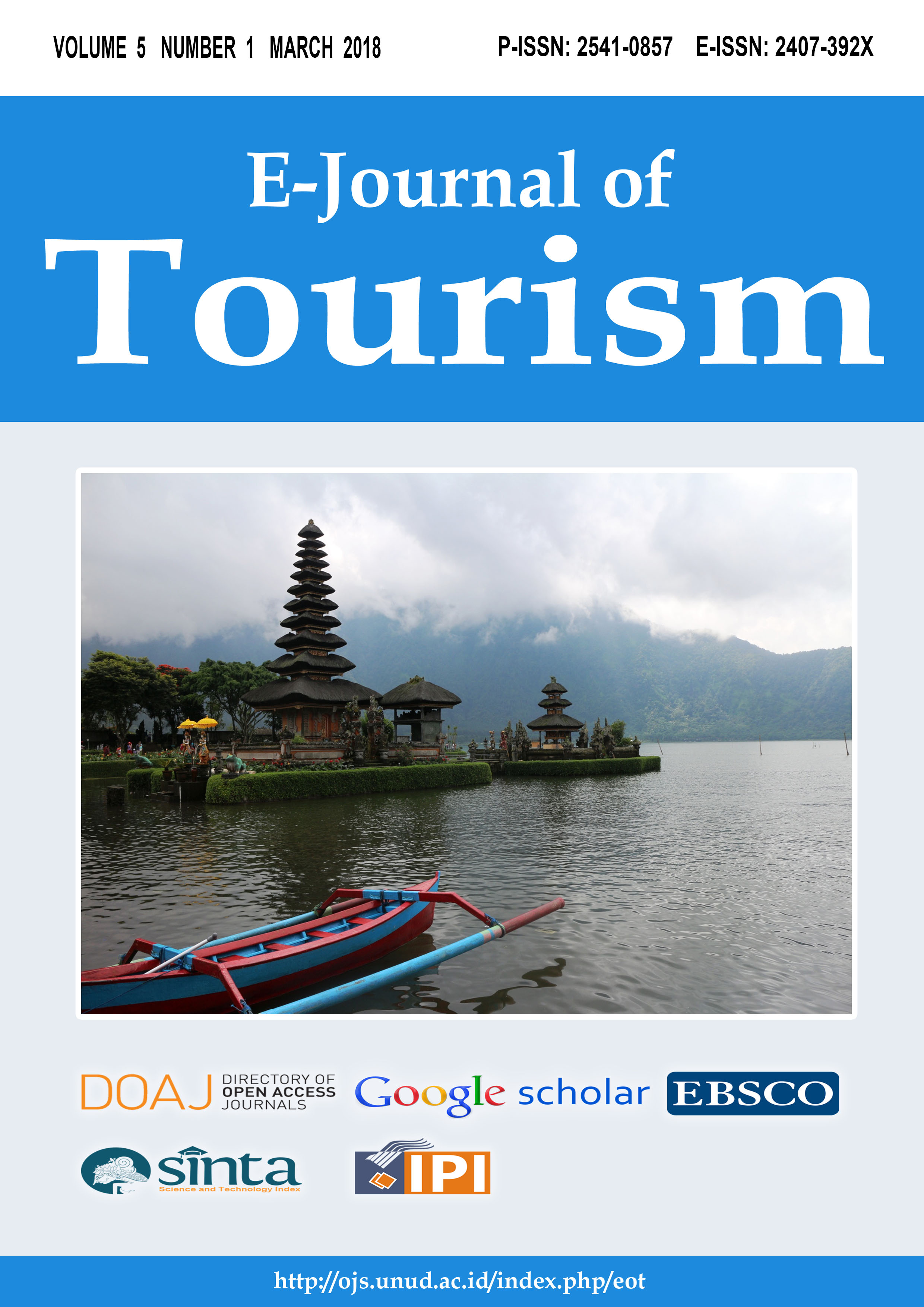Balanced Scorecard Implementation in Restaurant Management
Abstract
Balanced scorecard (BSC) is tools that are widely used to measure company performance including in the hospitality industry. It’s widely applied because it’s simple, easy, and effective especially in startup business. The objective of this research is to measure the restaurant performance by using BSC. Data observed by participant observation, unstructured interviews, and documentation that produced three measurement models. This data analyzed by descriptive analysis and simple linear correlation to prove the relationship between each perspective of BSC. This study proposed three correlative models that designed from selected indicator of four BSC perspectives. The results show (i) The first model: employee absentee rate is positively correlated with customer complaints 0.417, customer complaints are positively correlated with labor cost percentage of 0.387, and labor costs are negatively correlated with net profit margin of -0.395; (ii) The second model: the percentage of foodstuff price are negatively correlated with total number of customers -0.607, total number of customers are negatively correlated with food loss -0.916, food loss are negatively correlated with employee trained percentage -0.378; and (iii) The third model: revpash are positively correlated with average check of 0.994, average check are positively correlated with cover per labor hour of 0.800, and cover per labor hour is positively correlated revenue per employee with of 0.837. The all result indicates that BSC models could be implemented to measure restaurant performance by selecting indicator of each perspective. It means that a change in one perspective leads to disruption of other perspectives, so that the restaurant management must consider various factors if it has to make a decision or strategies. The BSC model can help the management in formulating strategies to improve restaurant performance.
Keyword: balanced scorecard, restaurant performance indicator
Downloads

This work is licensed under a Creative Commons Attribution 4.0 International License.
The copyright of the received article shall be assigned to the journal as the publisher of the journal. The intended copyright includes the right to publish the article in various forms (including reprints). The journal maintains the publishing rights to the published articles.




















